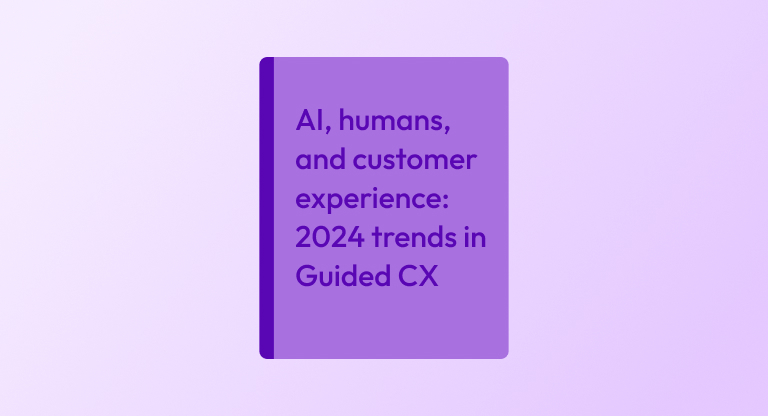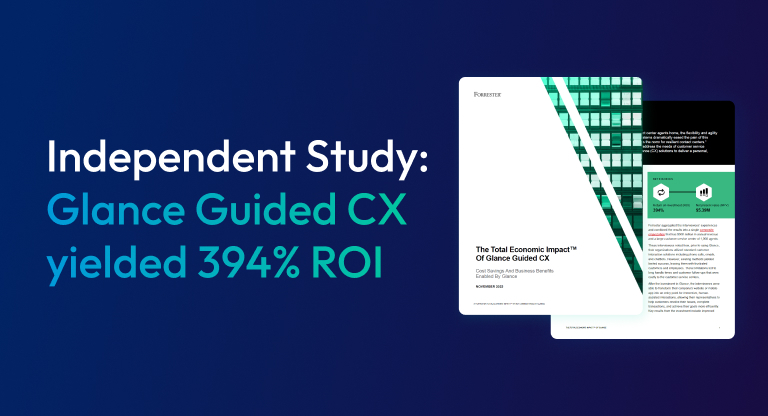According to a recent survey, 78% of customer service professionals are tracking at least one performance metric at work. But are they tracking the right metrics?
The truth of the matter is that there are a broad range of Key Performance Indicators (KPIs) contact centers can look at. There are higher-level metrics like Customer Effort Score (CES), Net Promoter Score (NPS), and Customer Satisfaction Score (CES). Then there are scoring methods that take you deeper into each specific point of contact, including the two that we are going to look at today: Average Handle Time (AHT) and First Call Resolution (FCR). Which contact center KPI will give you a better return on investment (ROI)? Let’s see …
What is Average Handle Time (AHT)?
AHT is a KPI that is defined by how long a call takes, from the moment the customer initiates a call or chat to the moment the customer hangs up or leaves the chat. This includes both hold and talk time. In addition, it takes into account any follow-up work that has to be done once the actual call itself has concluded.
How can you calculate Average Handle Time?
You can calculate Average Handle Time by dividing the total time of all customer calls/chats over a certain period of time (including talk, hold, and follow-up) divided by the total number of calls/chats taken.
Note that sometimes contact centers count parts of this process as KPIs on their own. For instance, the time spent talking to the customer can be counted as Average Talk Time (ATT) and follow-up work can be counted as After Call Work (ACW).
What are some pros and cons of measuring AHT?
Pros: A shorter call can be less costly for an organization – a great ROI for any business. The shorter the duration of the call, the more calls an agent can handle over a specified period of time.
Cons: This metric puts the company requirement before the customer needs. Customers who contact the customer service department don’t care if a call takes five minutes or six. They just want their issues resolved.
It’s not uncommon for contact center agents rated on ACW to cut off or transfer customers that might skew their results (for example, people with more complex issues who requires longer conversations). If conversations end without issues being resolved, there are often callbacks from the same customers about the same issues.
Moreover, often contact center agents don’t do after call work, follow up with customers, or keep promises made to customers. After all, that would negatively impact their numbers.
What is First Call Resolution (FCR)?
FCR is a KPI that asks a fairly straightforward question: Can an agent resolve customers’ issues the very first time they contact the organization about a given issue?
How can you calculate FCR?
FCR is measured by monitoring the number of contacts (across all channels – call, chat, email, etc.) over a specified period of time, as well as the number that were resolved on first contact. Then you can calculate the number of customer issues solved during first contact as a percent of the total number of customer contacts (calls, chats, emails, etc).
What are some pros and cons of measuring FCR?
Pros: Customers only reach out to the contact center once with their issues. Agents can take the time they need to properly answer customer questions, which increases customer satisfaction. An even better ROI point is that happy customers are often more open to upsells than those who have to call multiple times with the same question.
Plus, resolving issues the first time customers call increases customer loyalty. Why is this important? It’s all about customer retention. The cost of acquiring a new customer is about 10 times the cost of keeping an existing customer.
The publicity from an unhappy customer is even worse. According to the White House Office of Consumer Affairs, a dissatisfied customer will tell between 9-15 people about his or her experience, while a happy customer who had his or her issue resolved tells 4-6.
And an unhappy person will take his or her complaint from the private world of a contact center phone conversation or chat to the more public forum of social media. In fact, 71% of complaints online happen as a result of failed traditional customer service, according to marketing and customer service professional Jay Baer.
Cons: While customers might want their questions answered with great speed, FCR doesn’t necessarily do this. It places the focus more on answering questions the right way as opposed to as quickly as possible. Therefore, the length of a call will likely go up.
Calculating FCR can be complex if you take into account more contact points than just phone calls, yet if you don’t, your KPI is not entirely accurate.
Also, some questions are very complex or require research before they can be resolved. In that case, FCR is not possible.
What can negatively impact KPIs like ACW and FCR?
Both ACW and FCR are KPIs that can be negatively impacted by lack of or improper contact center agent training. A badly set up agent desktop, as well as slowdowns or breakdowns in the IVR, CRM, or other parts of the computer system, can result in challenges in finding customer information or answering questions.
Both KPIs can also be affected by taking the time to listen to and answer customers’ questions. The difference is that while AHT is negatively impacted by spending extra time with customers, FCR is positively impacted.
In addition, agents working to AHT may want to fix issues for the customer rather than teaching customers to fix issues themselves. After all, that’s a faster way to close the conversation down. However, the result is that customers will call back again later if they encounter the issue again – a result that FCR discourages.
Let’s take a customer who has an issue paying a bill online. The agent might handle the issue for the customer. Then the next month, the customer would call back again to pay the next bill. However, if the agent were to teach the customer how to pay the bill online, the customer could handle the bill pay process himself from there on out.
Customer experience and ROI: win the battle or win the war
AHT is a KPI that can provide short-term savings to an organization. Creating an atmosphere of positive customer experiences, on the other hand, provides long-term ROI: happier customers, deeper customer loyalty, positive online reviews, greater opportunities for upsells, and more.
One way to help improve the customer experience is to ensure that customers and agents can quickly understand what the other is talking about. Here are a few quick hints to help make that happen:
- Test – Consistently test your contact center technologies end-to-end to ensure that everything is working together without glitches.
- Train your agents to ask the appropriate questions to quickly clarify and resolve issues.
- Invest in the right tools – for instance cobrowse or screen share – to ensure your agents can quickly view issues and collaboratively solve problems.
The age of customer experience
No longer should companies hang everything off Average Handling Time (AHT) and calls handled per hour. Now, the landscape has changed – the scales have tipped much more towards customer satisfaction and customer influence metrics.
The bottom line is that AHT is a KPI that puts the focus on length of contact instead of quality of contact. To get the most out of your contact center, you need to think about the customer experience as a whole and how that can help your long-term ROI, as opposed to simply churning through customers.
Learn more about the changing role of AHT and how companies can best use it going forward right here: What is Average Handle Time – and does it matter anymore?
And if you’re curious to see how our Guided CX solutions help create a truly customer-centric experience by fostering human-to-human connections, book a quick demo today.
SaveSave
SaveSave
SaveSave





